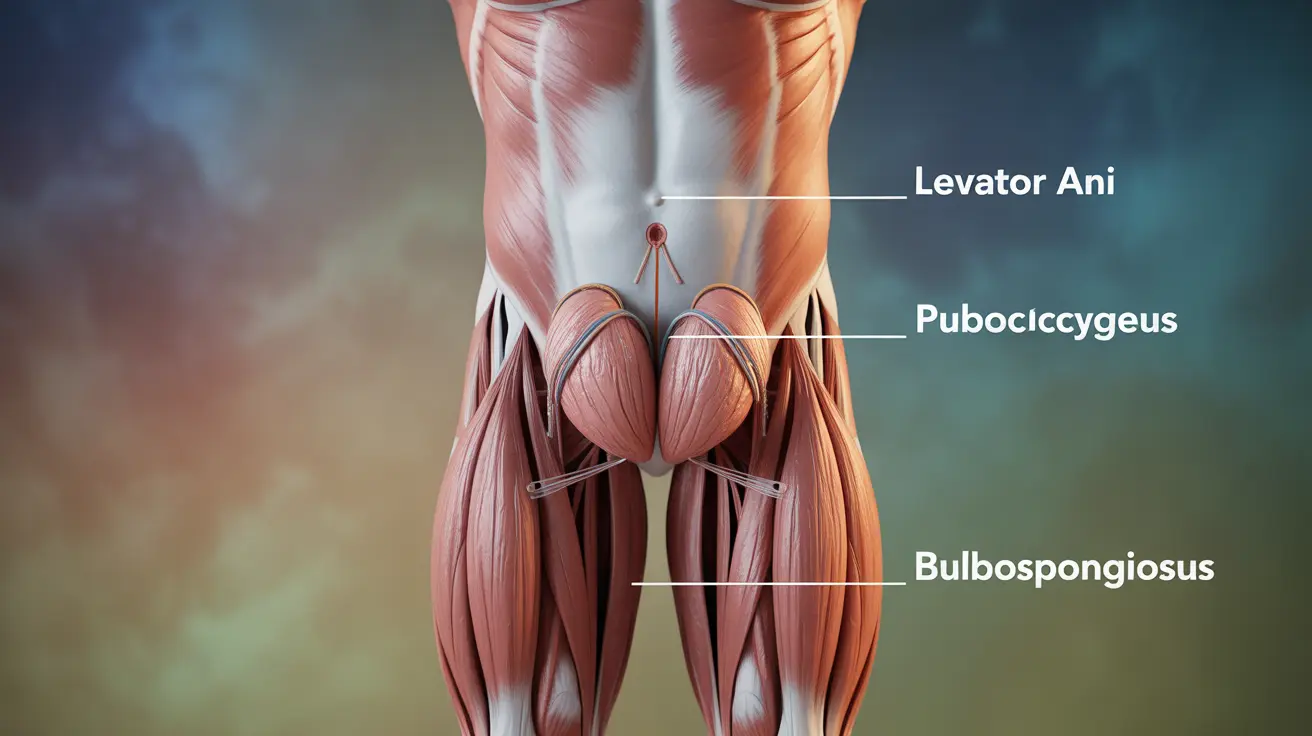Kegel exercises, though often associated with women's health, offer significant benefits for men's sexual health and overall well-being. These exercises strengthen the pelvic floor muscles, which play a crucial role in sexual function, bladder control, and core stability.
Understanding and properly performing these exercises can lead to improved sexual performance, better bladder control, and enhanced quality of life. Let's explore the comprehensive benefits and proper techniques for male Kegel exercises.
Understanding Male Pelvic Floor Muscles
The pelvic floor muscles form a supportive hammock beneath the pelvis, supporting vital organs and playing a key role in sexual function. These muscles control erectile function, ejaculation, and urinary continence. Strong pelvic floor muscles are essential for optimal sexual health and bladder control in men.
Sexual Benefits of Male Kegel Exercises
Regular Kegel exercises can significantly enhance male sexual function in several ways:
- Stronger and longer-lasting erections
- Better control over ejaculation
- Increased intensity of orgasms
- Enhanced sexual stamina
- Improved sexual confidence
These benefits stem from increased blood flow to the pelvic region and better muscle control during sexual activity.
Proper Kegel Exercise Technique for Men
To perform Kegel exercises correctly, follow these steps:
Finding the Right Muscles
Identify your pelvic floor muscles by attempting to stop urination midstream or by imagining you're trying to prevent passing gas. The muscles you engage during these actions are your pelvic floor muscles.
Basic Exercise Steps
- Empty your bladder before starting
- Tighten your pelvic floor muscles for 5 seconds
- Release and relax for 5 seconds
- Repeat this sequence 10-15 times per set
- Perform 3 sets daily
Developing an Effective Routine
Start with basic contractions and gradually increase duration and intensity. Aim for consistency with daily practice, but avoid overexertion. Like any exercise, proper form is more important than quantity.
Progressive Enhancement
As your strength improves, challenge yourself by:
- Increasing hold times to 10 seconds
- Adding more repetitions
- Performing exercises in different positions
- Incorporating Kegels into your daily activities
Timeline for Results
Most men begin noticing improvements within 3-6 weeks of consistent practice. However, optimal results typically develop over 3-6 months of regular exercise. Patience and consistency are key to achieving lasting benefits.
Frequently Asked Questions
Q: What are the main sexual benefits of doing Kegel exercises for men? A: The main sexual benefits include stronger erections, better ejaculatory control, more intense orgasms, and improved sexual stamina. These exercises enhance blood flow to the genital area and strengthen the muscles responsible for sexual function.
Q: How can Kegel exercises help with erectile dysfunction and premature ejaculation? A: Kegel exercises strengthen the bulbocavernosus muscle, which helps with blood flow during erections and ejaculatory control. Regular practice can improve erectile function and help delay ejaculation through better muscle control.
Q: What is the correct way for men to perform Kegel exercises to strengthen pelvic floor muscles? A: The correct technique involves identifying the pelvic floor muscles, contracting them for 5 seconds, relaxing for 5 seconds, and repeating 10-15 times per set. Perform 3 sets daily, focusing on proper muscle isolation without engaging abs, buttocks, or thighs.
Q: How long does it usually take for men to notice improvements from regular Kegel exercises? A: Most men begin noticing initial improvements within 3-6 weeks of consistent practice. However, significant and lasting results typically develop over 3-6 months of regular exercise.
Q: Can Kegel exercises also improve bladder control and reduce urinary leakage in men? A: Yes, Kegel exercises can significantly improve bladder control and reduce urinary leakage by strengthening the muscles that control urination. This is particularly beneficial for men experiencing post-surgical incontinence or age-related bladder control issues.




